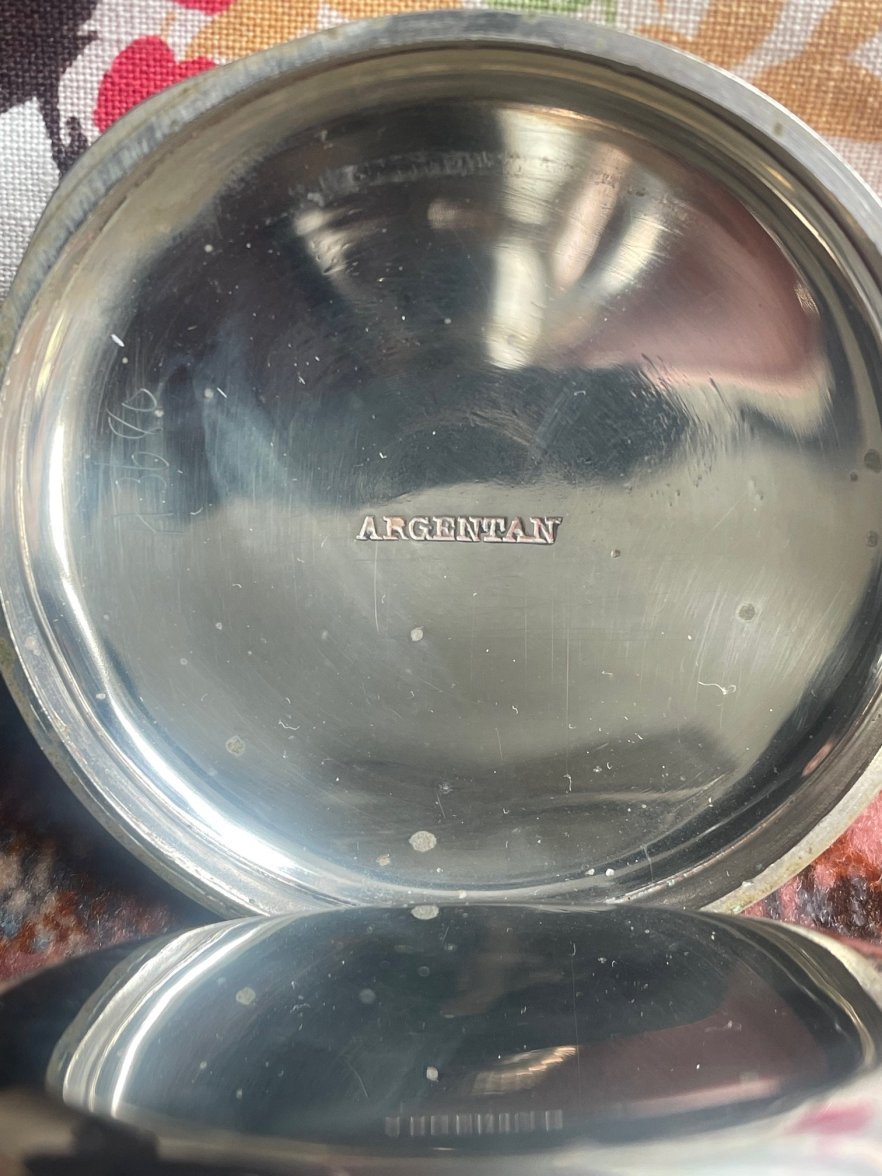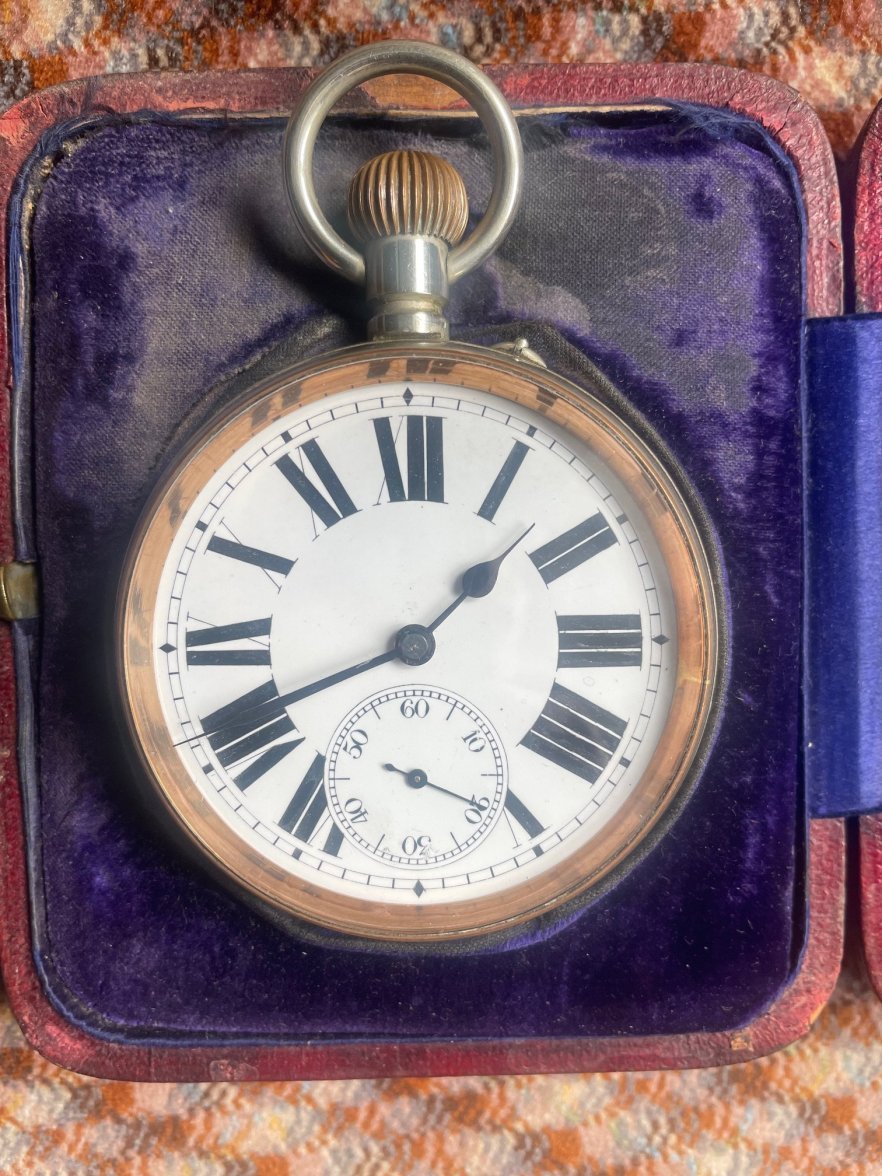Thank you
@DaveK.
Hello Peter, welcome. I can tell you a bit about it – but probably not what you want to know!
In the period (approximately) 1885 – 1890, the ‘style’ amongst makers in Swiss watch industry was these ‘bar’ movements (also known as ‘pistol’ movements). Sadly I can’t tell you who made this watch (although there are still many of these to be found). This was before the start of the Omega operation – but Louis Brandt (the Omega parent) DID make bar movements: this was NOT one of them. In my opinion, this watch has nothing to do with Louis Brandt/Omega.
The case material used on this (and almost all similar pocket watches from this period) was a nickel alloy called Argentan – which is why that is marked inside the case. There were a few cases that were made of silver and the marking of Argentan is to distinguish it from silver (in spite of its silvery colour).
I agree with
@Pvt-Public that the case number you show doesn’t help. If we knew the maker, it might help to date it (but only if an enthusiast had a particular interest in that make – but since we don’t know, sadly it’s no help.
I would expect this to be a ’30-hour’ calibre – so if you’re getting 60 hours you’re lucky! There were indeed 8-day pocket watches that followed the period of the bar movements – and Omega did indeed produce the 30’’’ and 27’’’8-day watches, but they were larger – not least to accommodate larger springs (and were known as ‘Goliaths’ – a term started by Louis Brandt).
Incidentally, production of some of the bar movements that Louis Brant did produce continued well into the time after the start of the Omega operation – and at one time, for about 8 years Omega was producing a 27’’’ 30-hour bar movement and a 27’’’8-day in parallel.
These large ‘pocket’ watches were generally too large for the pocket and were intended for display. The silver-fronted display stand you show was typical for watches like this – quite possibly produced in UK (a big market for the Swiss industry at that time). You should find a hallmark on the silver of that display stand – and that would allow dating of the silver-fronted stand (I guess about 1900): although there is no guarantee that the watch started with this stand, there’s a good chance. Please show that hallmark if you can find it. Tom





